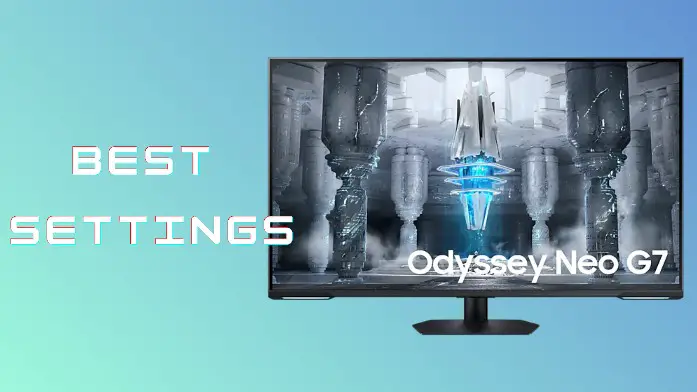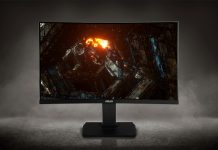Are you tired of staring at a dull and lifeless screen? Look no further! In this comprehensive color settings guide, we will dive into the world of the Samsung Odyssey Neo G7 43 Monitor and uncover the best settings to make your visuals pop.
Whether you’re a gamer seeking vibrant colors for an immersive gaming experience or a creative professional in need of accurate color reproduction, we’ve got you covered. Our step-by-step instructions will walk you through not only color settings but also resolution, contrast, and more, ensuring that every detail is fine-tuned to perfection.
But that’s not all. We understand that every user is unique, and preferences may vary. That’s why our guide provides room for customization, allowing you to tailor your monitor’s settings to suit your specific needs and preferences. Say goodbye to mediocre visuals and hello to a world of vibrant, lifelike colors that will breathe new life into your screen.
Table of Contents
Here are the best color Settings for Samsung Odyssey Neo G7 Monitor
Non-HDR Brilliance
This guide is primarily focused on non-HDR settings for the Samsung Odyssey Neo G7 Monitor. While HDR (High Dynamic Range) can provide incredible visuals, it’s not always necessary, and some prefer to optimize their monitor for non-HDR content.
Close to OLED
One of the standout features of the Samsung Odyssey Neo G7 Monitor is its impressive black levels. In fact, with the help of its numerous local dimming zones (specifically 1196), it can get remarkably close to the deep blacks you’d find on an OLED display. The presenter in our reference video even provides a visual comparison, highlighting the monitor’s ability to rival the legendary OLED displays.
Getting Started
Let’s dive into the settings that can make your Samsung Odyssey Neo G7 Monitor shine. Remember, these settings aim to enhance your non-HDR experience:
- Response Time: Start by setting the response time to “Faster” for smoother visuals during fast-paced gaming.
- Game Picture Mode: Choose the “RPG” preset as a starting point. While the presenter notes that presets aren’t perfect, the adjustments made here can be applied to other modes as well.
- FPS and HDR: Set the FPS to 120 for a flicker-free experience. HDR should be turned off for this non-HDR setup.
- Variable Refresh Rate (VRR): Although the quick access menu might show VRR as off, it’s actually turned on. This is particularly important if you’re using the G-Sync compatibility mode.
- Game Mode and Other Settings: Ensure “Game Mode” is on. Response time remains “Faster,” and you can explore additional settings like Virtual AimPoint, Core Lighting, Surround Sound, and Dynamic Black Equalizer based on personal preference.
Picture Settings
The next step involves fine-tuning the monitor’s picture settings:
- Brightness: Set it to 30.
- Contrast: Adjust to 40.
- Sharpness: Keep it at 8.
- Color: Set to 30.
- Tint: No need to change this.
Advanced Picture Settings
Now, venture into the advanced settings to optimize your viewing experience:
- Local Dimming: Set it to “High” for deep blacks.
- Contrast Enhancer: Keep it on “Low.”
- Color Tone: Stick with “Standard.”
- White Balance: Unfortunately, you only have access to a two-point adjustment. The presenter recommends lowering the red gain to -15 to correct any excess redness.
- Gamma: Adjust the gamma to 2.2.
- Shadow Detail: Set to -5.
- Color Space: You can choose “Native” or experiment with other settings if desired.
Nvidia Control Panel (For PC Users)
If you’re using this monitor with a PC, head to the Nvidia Control Panel and make these minor adjustments:
- Brightness: Leave it as is.
- Contrast: Increase it to +65.
- Gamma: Set it to 1.2.
Resolution and Color
Confirm that you’re running the monitor at 4K and 120Hz. Note that this setup doesn’t use HDR, as indicated by the 8-bit color setting, which is different from HDR’s 10-bit color.
G-Sync Compatibility
Ensure that Variable Refresh Rate (VRR) is on, even if the quick access settings suggest otherwise. This setting is crucial for enabling the G-Sync compatibility mode.
Gameplay Experience
The guide concludes with practical tips for optimizing your gameplay experience:
- Play a few games to adjust in-game brightness levels to your liking.
- If you find the visuals too dark, consider tweaking the contrast, brightness, or local dimming intensity.
- Experiment with Contrast Enhancer, Shadow Detail, and Dynamic Black Equalizer settings if necessary.
- Lastly, make minor adjustments to gamma and contrast in the Nvidia Control Panel for PC gaming.
Conclusion
With these meticulously crafted settings, you can transform your Samsung Odyssey Neo G7 Monitor into a visual powerhouse that rivals even the finest OLED displays. The presenter’s dedication to finding the perfect settings ensures that you get the most out of your investment.
This guide serves as a launching point, allowing you to customize your settings to your unique preferences. Whether you’re a gamer, a content creator, or a casual user, these settings will help you appreciate the full potential of your Samsung Odyssey Neo G7 Monitor, turning it into a worthwhile and immersive addition to your setup.





